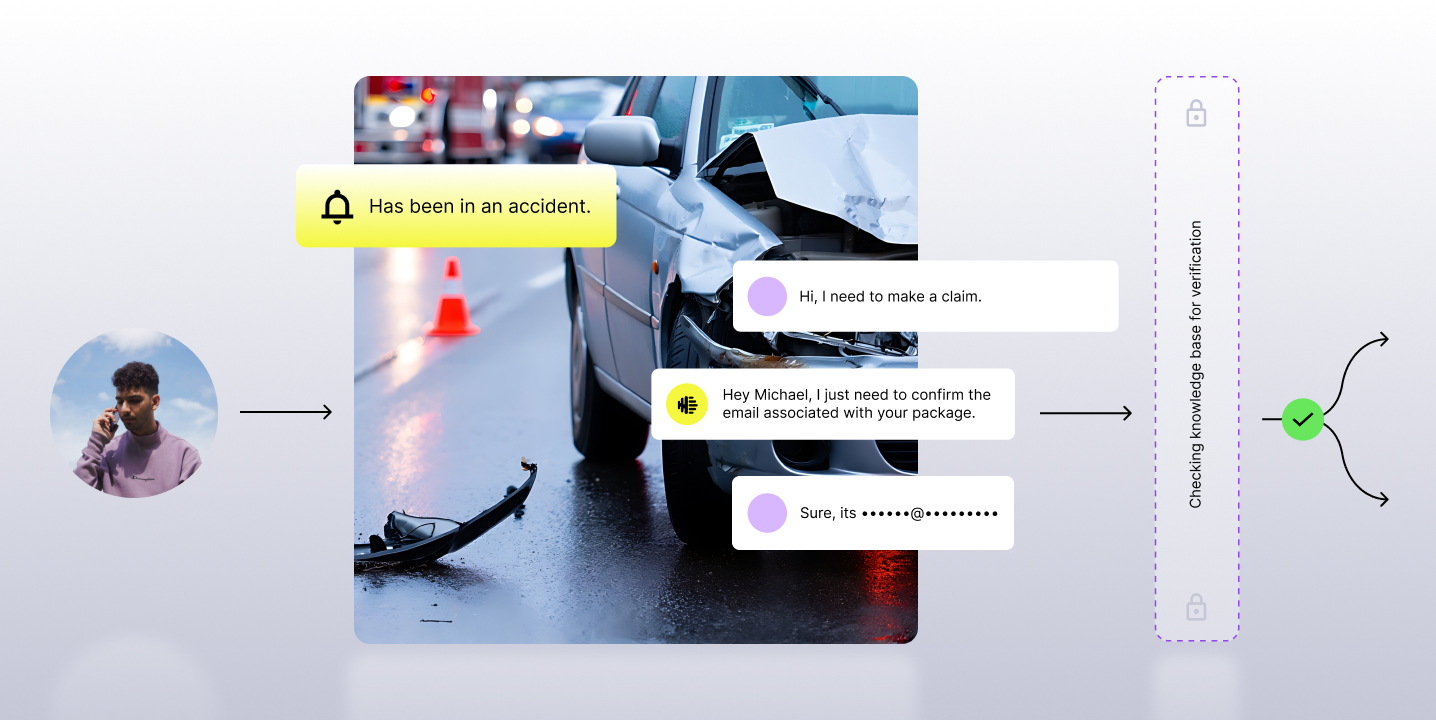There’s been a lot of buzz around Generative AI recently. Some claims are sweeping—“This is going to revolutionize business as we know it!”—and some are more targeted, but the unifying message is clear: Generative AI is here to stay, and it holds potentially limitless possibilities for contact centers.
But given the vast number of capabilities that Generative AI provides, it can be overwhelming to know where to start. To answer that question, we spoke with Justin Robbins, founder and principal analyst of Metric Sherpa and a 20-year expert in the customer-experience arena.
In the following condensed version of our conversation with Robbins, he breaks down the steps contact centers can take to determine where to begin applying Generative AI technology and how to do so effectively and responsibly.

Observe.AI: There are so many potential use cases for Generative AI within the contact center universe. How do you determine where to start?
Justin Robbins: First, I think you need to ask yourself two questions: You heard about this technology and capability, but have you formed a thought on what the desired outcome would be? There's not a wrong answer here. Maybe it's about improving efficiency, maybe it’s about reducing costs, maybe it's about improving satisfaction. Chances are it's those three and more kind of bundled into something. But what is your desired outcome?
Then, ask yourself: How does that desired outcome align with our business goals and strategy? A lot of contact center leaders I work with struggle with this piece on an operational basis. Do we have a really clear alignment between your desired outcome and what the broader business is saying is important?
Observe.AI: When defining your desired outcomes for this technology, what should you be focusing on?
Robbins: You should have very clear, very realistic expectations of what you can or can't, will or won't, do with these types of solutions. The question I would always ask my teams when we're doing these types of things is, first off, do we have a definition of what success means? And more importantly, how will we know it when we see it?
Related to that desired outcome, ask yourself: What is a pain that you feel today that you see this solution solving? And then, how significant is that impact?
There have been times where there was something that I believed had a significant impact to me or to my team. But then when I went to my boss and I said, “Hey, I want to do this,” and she gave me a particular metric and said, “Well, how's this solution going to move it?” And it turns out we were already at a high percentage, and so the potential outcome was incremental. And she's like, “Justin, where we're at today is good enough.”
So how significant is the impact? Maybe the significance is big. Well, in that case, what is the work required to make that happen? If you've got a significant impact paired with an insignificant amount of work that needs to be done, that may be a really great example of where to go first.
Observe.AI: You mention the importance of considering who this technology will affect, as well. Can you elaborate on that piece?
Robbins: If we understand business alignment and the impact to us and the impact to our direct teams, do we also know who this would affect outside of the contact center or outside of our realm of influence? And what the importance and impact to them is?
These are all the things that, when we think about selling change and trying to get people to engage in an idea that's not theirs, we've got to really understand. We've got to be really clear on what we think this will achieve for us, who it will affect, and the value of that impact.

Observe.AI: Once you’ve determined where to start, what’s the first step to ensure you’re experimenting with and applying this technology responsibly?
Robbins: Given that it hasn't been done before, there's not really a clearly defined playbook or set of rules to go after, right? So, how do we think about this?
We've probably all heard or read—or maybe even experienced—some extremes in terms of what Generative AI might do. For example, some might say, “We're going to eliminate people because we can now have this technology do it all,” or “It’s going to enable us to experience exponential improvements in terms of efficiency or quality.” I think there are nuggets of truth in all of those things, but again: You should have tempered and realistic expectations for what this tech means and what success looks like. Have a really clear idea of what your desired outcome is.
Observe.AI: Let’s say you’ve got that desired outcome clearly defined. What’s next to ensure responsible implementation?
Robbins: There are a couple things that are really important. Number one is to have clean and validated sources of truth. It could be your existing forms or standard operating procedures. It might be information that sits within your knowledge base or CRM. It might be clean, accurate transcripts between agents and customers. There are all of these potential sources of truth these technologies learn from and leverage and act upon.
Number two is you need to have the ability, in real time, to observe what's happening. As AI technologies are using that data and providing answers or guidance, how do we make sure that we can see it, that we can validate it, that we can, if needed, iterate quickly? We need the ability to intervene and make a change on the fly.
Third, you need to have a tested, scalable contingency plan. If you're adding anything, I don't care if it's a new channel or a new technology, it will always cost you more before it will cost you less. Part of experimenting responsibly is saying, “We're going to turn this on, but we're still going to have to fund and enable and support the backup plan for a certain period, if not for an indefinite amount of time.”
Finally, I think it is important to have a group of key stakeholders involved. You could have marketing, you could have sales, you could have all sorts of people involved. Absolutely have multiple stakeholders.
At the end of the day, I think we're going to see an increasing usage of technology like this. So you can’t completely ignore it. It's going to be a business strategy, shaping where and how we are going to be leveraging humans. It's exciting. And I think more than anything, I'm just really looking forward to seeing where it goes, and to learn about how organizations are thinking and experimenting and, hopefully, succeeding as they're deploying these types of technologies.
Interested in learning more about Generative AI?
If it sounds like we’re passionate about Generative AI for contact centers, that’s because we are. And we’re here to partner with you every step of the way.
Get more Generative AI content here:


.png)














